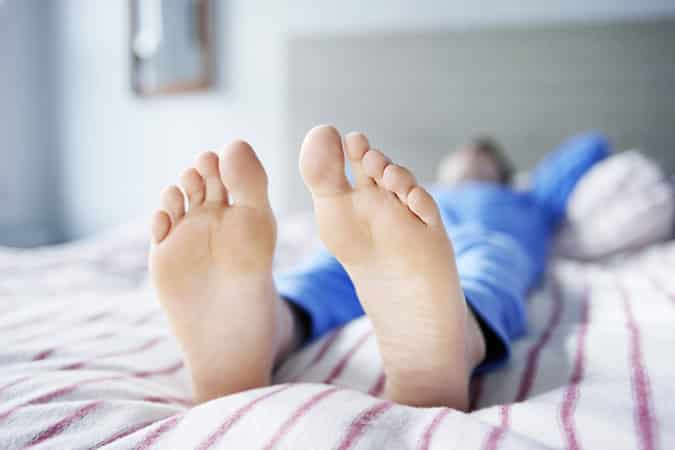What is Restless Bone Syndrome?
Last updated 26/04/2017 by The pain clinics - Interdisciplinary Health
What is Restless Bone Syndrome?
Restless legs syndrome, also known as restless legs syndrome, is a neurological condition in which the sufferer has an irresistible urge to move his legs due to varying, often very uncomfortable or painful, sensory feelings from the legs. Restless legs syndrome affects, naturally enough, most often the legs, but can also affect the arms, chest, head and chest. Moving the affected area provides temporary improvement. In technical terms, the condition is known as Willis-Ekbom disease (WED) or Wittmaack-Ekbom syndrome.
Symptoms of restless legs
Those affected by this neurological disorder often describe the discomfort and pain as varying, but some descriptions that are often used are "an itch that cannot be scratched away", "a buzzing feeling", "murmur in the leg and leg" and "as if an invisible man wedges one on the leg ». One does not need to have the condition to understand that this can go beyond quality of life and ability to concentrate. The symptoms usually become clearer when the person is at rest - such as when relaxing, reading or trying to sleep. The symptoms are worst in the evening and at night.
People who suffer from restless legs syndrome also have occasional twitches during sleep - this is considered one of the most objective diagnostic criteria for this disorder. This goes beyond the quality of sleep and results in poor recovery and general rest. Due to these symptoms, the condition is often characterized as one neurological sleep disorder.
- Disturbed sleep

Sleep pattern of a restless leg syndrome (red) vs. a normal sleep pattern (blue). We see that a leg of restless bones does not go down to the deeper layers of sleep, and this will naturally go beyond the feeling of well-being and recovery.
- The cause of restless legs syndrome
The most common cause of restless bone syndrome is iron deficiency, but only 20% of cases are due to this. Other causes include varicose veins, folate deficiency, magnesium deficiency, Fibromyalgia, sleep apnea, diabetes, thyroid disease, neuropathy, Parkinson's syndrome and certain autoimmune conditions such as Sjøgren's, celiac disease and the consept of rheumatism. It has also been seen that the condition can worsen in pregnancy. Studies have shown that up to 60% of cases are due to familial genetic factors.
Treatment of restless legs syndrome
The treatment usually consists of levodopa or dopamine agonists, such as pramipexole and the like. In cases where there is a lack of iron, magnesium or folic acid - then naturally corrected nutritional intake is the key to improved quality of life and less symptoms of the disorder.
Many also feel that compression socks can work to relieve symptoms.
RELATED PRODUCT / SELF-HELP: - Compression sock
Compression socks can contribute to increased blood circulation in those affected by reduced function in the legs and feet.
Thanks to Bjørn Eirik Tindvik, Board member of the Restless Legs Association, who contacted us on Facebook regarding this topic. You can visit the patient association Rastløse Bein på Rastlos.org - Restless bone syndrome should be given greater focus in the health care system and perhaps increased research funding should also be dedicated to research within this topic. What do you think?






Leave a reply
Want to join the discussion?Feel free to Contribute!